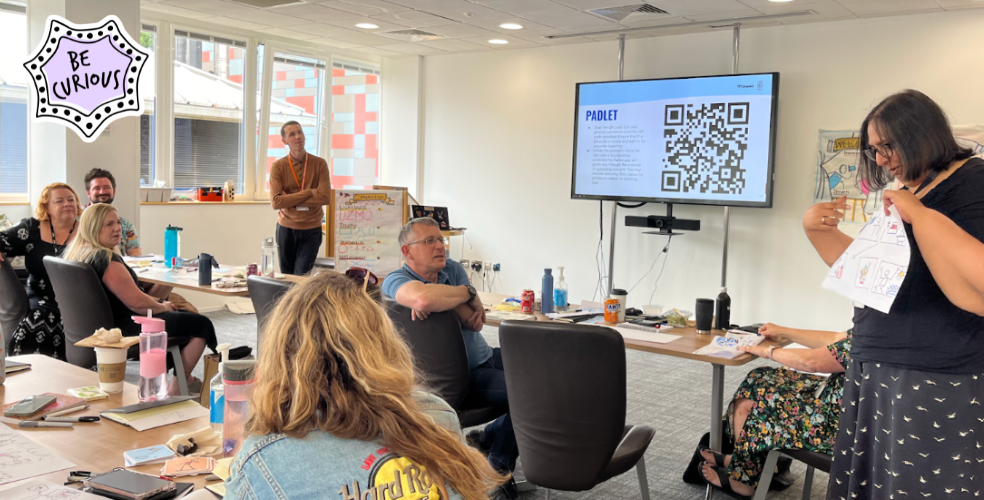This week, we took a trip to Wales to run a visual facilitation training session with the Office for National Statistics (ONS). Thirty members of the ONS team joined us, from seasoned Enterprise Architects, Product Owners and IT Delivery Managers to new associate Researchers just two days into their roles. This diverse group validated one key point: drawing and visualising together is a great leveller. Throughout the day,everyone participated in activities, pitching ideas, providing feedback, and reflecting as a cohesive team.
Our workshop aimed to achieve three main objectives:
-
Master sketching best practices
-
Simplify concepts through sketching
-
Apply visual thinking in ambiguous spaces
And some reflections on:
-
applying visual tools in daily practice
-
enhancing communication through visual storytelling and storyboarding
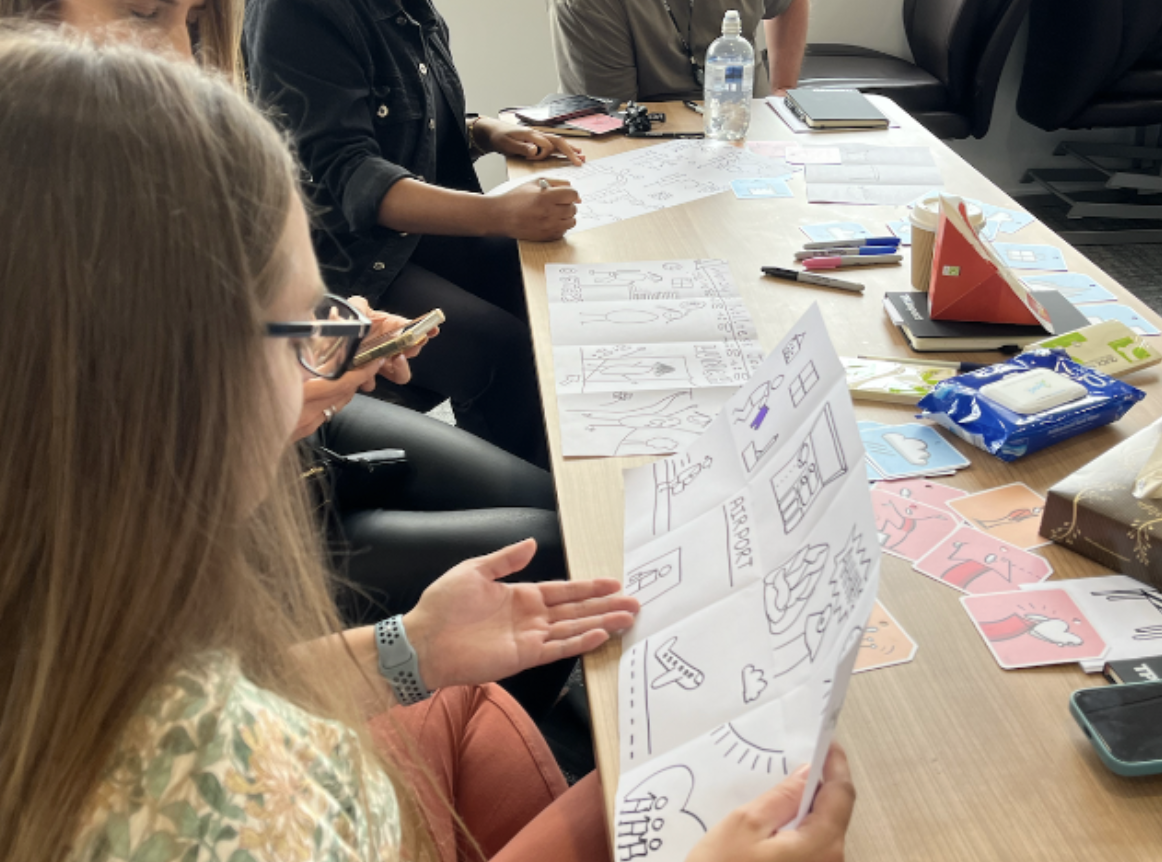
Master sketching best practices
We kicked off with discussions about sketching best practices, especially important for those who don't consider themselves visual folk, which was most of the room.
To ease everyone in, we started with warm-up activities like "30 Circles" and "Squiggle Birds." These exercises helped relax our bodies and brains, encouraging a playful mindset and embracing the messy mistakes. We demonstrated how simple marks — a beak, a few feathers, and an eye — could transform a squiggle into a bird. These warm-ups showcased how little effort is required to create simple, meaningful, and easy-to-read images.
Simplify concepts through sketching
Next, we delved into techniques for simplifying complex concepts through rough sketches. Research shows that 90% of information transmitted to the brain is visual, and visuals are processed 60,000 times faster than text. So we explored how combining text with visuals can enhance message delivery.
We practised creating simple drawn metaphors to distil complex ideas into easily understandable visuals, considering the audience's language and perspective. This skill is invaluable in facilitating communication across different disciplines.
Apply visual thinking in ambiguous spaces
In the latter part of the session, we explored the benefits of visual thinking in ambiguous spaces—those situations characterised by uncertainty and complexity. Visual tools like diagrams, mind maps, and sketches can clarify complex ideas and reveal hidden patterns, trends, and connections.
Ambiguous spaces often involve disparate pieces of information that may not initially seem connected. Visual thinking helps identify these connections, facilitating a deeper understanding of the situation—much like how a squiggle becomes a bird. We discussed and practised several visual ideation and collaborative brainstorming techniques, including a visual ideation mashup and "Evil 8s." These exercises demonstrated how visual team play can generate diverse ideas and perspectives, crucial in ambiguous contexts where multiple solutions may exist.
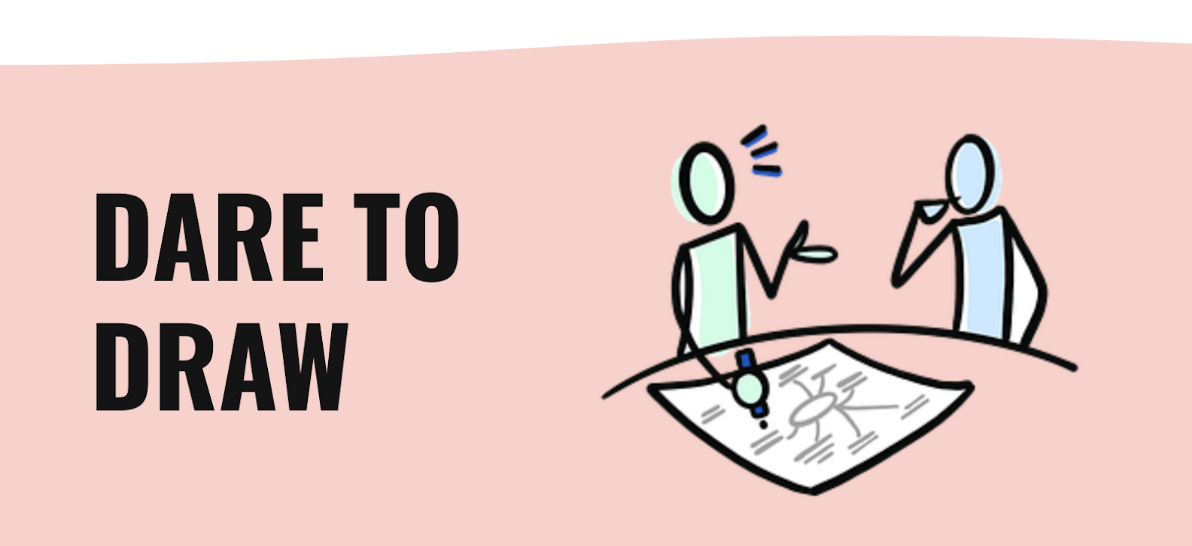
Reflection on applying visual tools in daily practice
Throughout the workshop, we paused to reflect on how the ONS team could integrate these visual tools into their daily routines. We discussed storyboarding with users or team members, prototyping, creating personas, mapping, sketching workshops, enhancing decks or pitches, and using visuals in retrospectives, among other applications.
Enhance communication through visual storytelling and storyboarding
We ran activities focusing on visual storytelling and storyboarding, working both individually and in small teams. Participants presented their visual stories at the end of the day, and storytelling emerged as a highlight. It's an essential tool for building empathy, creating connections, and bringing ideas to life, often overlooked in busy environments.
We also addressed the importance of visual storytelling in online and hybrid settings, sharing suggestions for tools, software, and websites with strong visual elements for creating artefacts and storyboards.
Wrapping up
It was an ace day of visual learning, and we were equally impressed with the ONS team’s engagement and creativity.
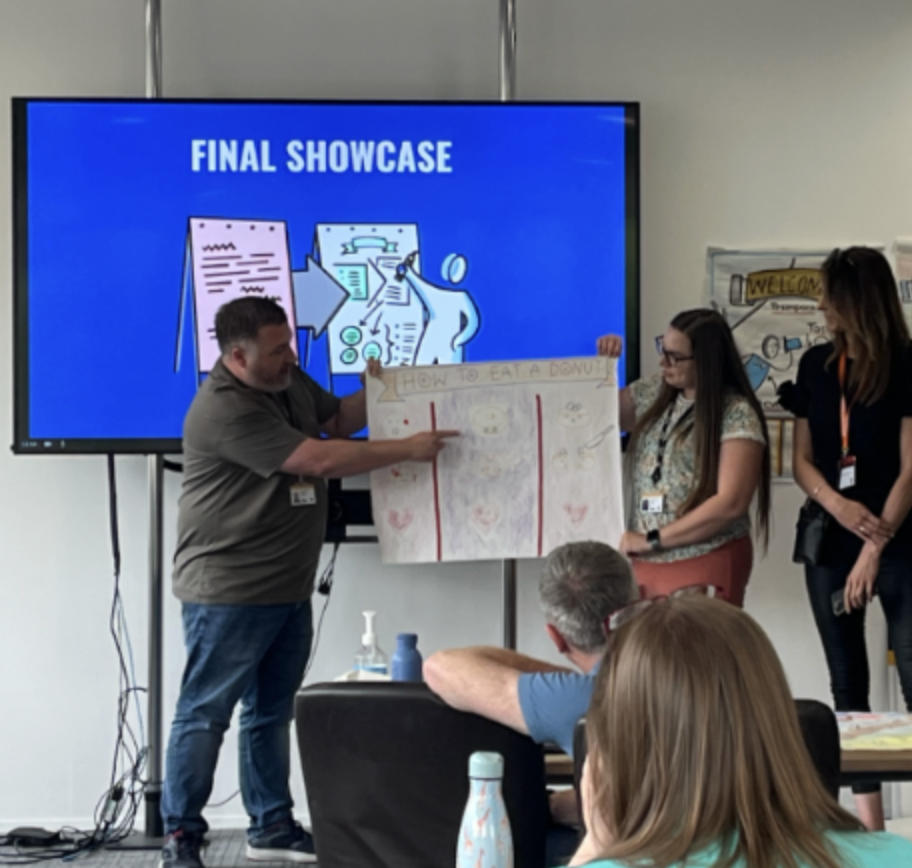
As Darren Programme Delivery Manager & Delivery CoP Lead said:
“We need to engage with our teams, users, stakeholders – everybody impacted to ensure we are doing the right things, at the right time, with the right input for our deliveries! Visual thinking is a fantastic way of telling a story, engaging people, and bringing delivery to life.”
He followed up with: “It’s easy for people to be sceptical when you look at the value of drawing something in a professional work environment. Look beyond the pens, crayons and scribbles and you have a tool to visualise thoughts, ideas, outcomes that can appeal and engage with people in a different way that written text and talking can’t always convey.”
Everyone left with a brain rucksack equipped with practical visual thinking skills they could start applying immediately.
Visual thinking is a powerful tool for navigating, facilitating and making sense of ambiguous spaces, and we’re excited to see how the ONS team will implement these techniques in their work.
Want to know more?
If you would like to run this workshop with your team or want to discuss training please contact us.
The Visual Facilitation short course runs 10.00- 16.00 in person for up to 30 people, it's a great for mixed teams of people in Digital, Data and Technology to help confidence in visual practices and add to existing facilitation tool belts. It is also a great way to help team culture as a bonding exercise as the group interacts and practises exercises together in a lively hands-on environment.
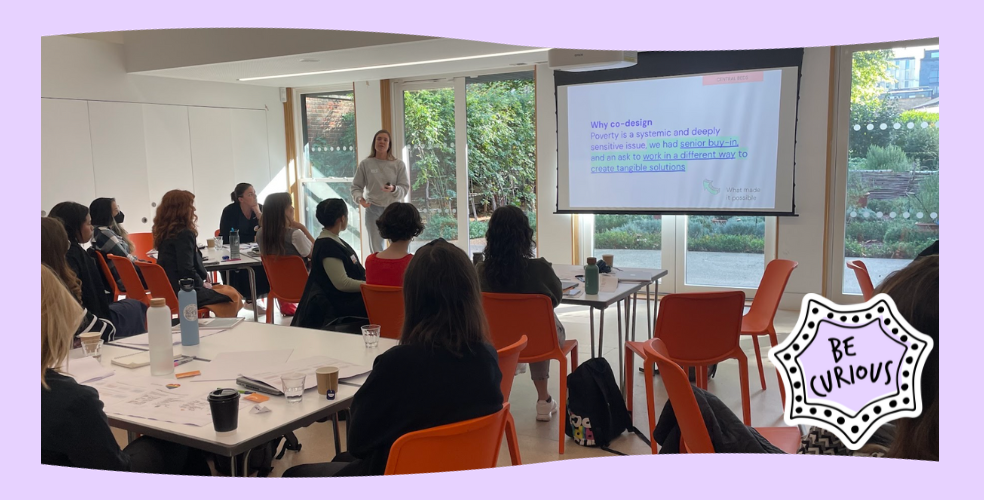
Co-design training with KA McKercher
Read the team’s highlights from our recent co-design training day with KA McKercher.
Read moreOur recent insights
Transformation is for everyone. We love sharing our thoughts, approaches, learning and research all gained from the work we do.

Budget 2025 reveals how digital funding really works
Background: The Budget was announced yesterday, it’s not announcing big new programmes of work - it’s fine tuning how the government's fiscal policy supports existing policy objectives. There’s takeaways for all digital leaders from this announcement and some thoughts about that to do next.
Read more
Unlocking the benefits of AI for charities
How human-AI collaboration can help charities get true value from their data, turning insights into impact.
Read more
What's the future for open data in the UK?
A decade ago, the UK was a leader in open data, but its prominence has faded. We examine why the focus has shifted and what the future holds for the role of open data in the public sector.
Read more
